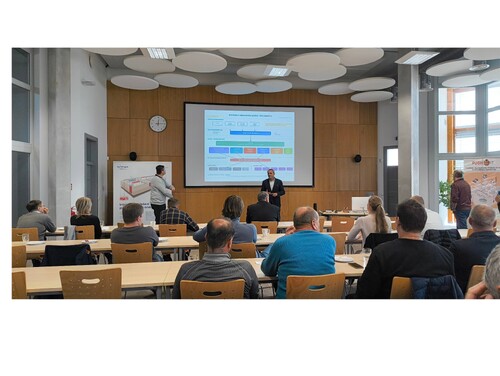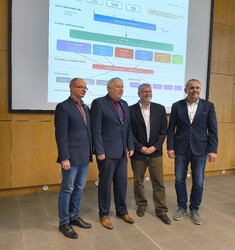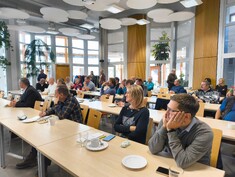The aim of the excursion of representatives of the Association of Municipal Services of the Czech Republic, hosted by the City of Litoměřice, was to showcase modern approaches to using renewable energy sources – specifically geothermal heat. This is energy extracted from various depths of the Earth’s crust, which in future may play a key role in heating and cooling cities. The strategic SYNERGYS project being implemented in Litoměřice focuses precisely on the possibilities of harnessing heat from the Earth through shallow and deep boreholes, and on using the rock environment to store energy in underground collectors during periods of surplus.
“We were interested in concrete examples of how geothermal energy is used in the day-to-day work of municipal services, in the latest developments and in the goals of the project that is researching this topic here at RINGEN,” said Vítězslav Votruba, Director of the Technical Services of the City of Litoměřice.
During the visit, the directors of technical services also learned about the latest technologies and about how similar systems could operate in Czech cities. Geothermal energy, for example, makes it possible not only to heat and cool buildings efficiently, but also to warm paved surfaces, sidewalks and roads, thereby reducing the need for road salt and extending the lifespan of these surfaces.
Experts point out that a shift to sustainable sources of heating and cooling will be essential in the coming years. It is not widely known that the European Energy Efficiency Directive requires cities with more than 45,000 inhabitants to develop integrated heating and cooling strategies, and geothermal energy is indispensable for many of them in meeting this requirement.
“We believe the excursion was of interest to the directors of technical services and that the knowledge gained at the RINGEN research centre will, in time, help modernise the infrastructure of our cities,” added geophysicist Petr Dědeček, who presented the centre’s research activities and the objectives of the SYNERGYS project to the participants.





